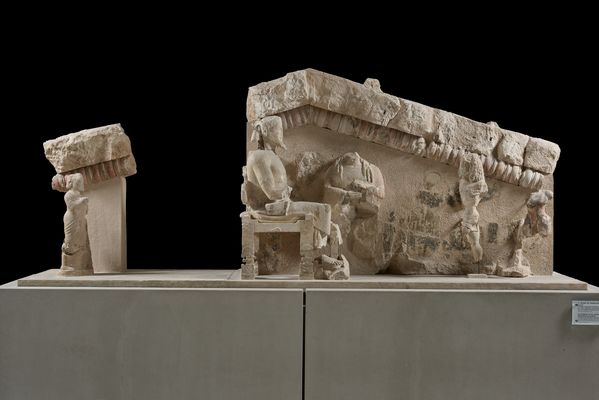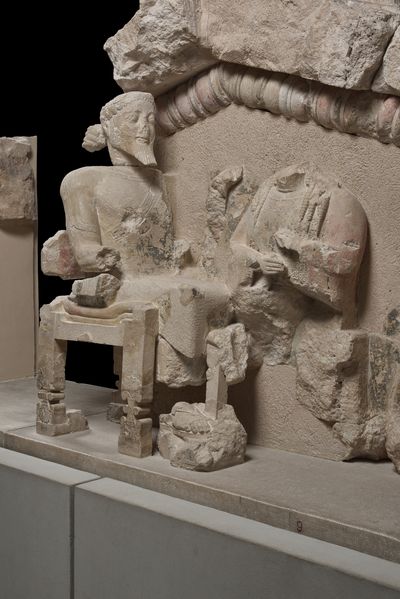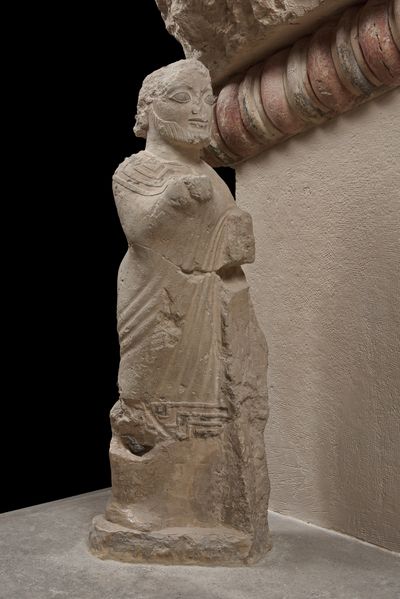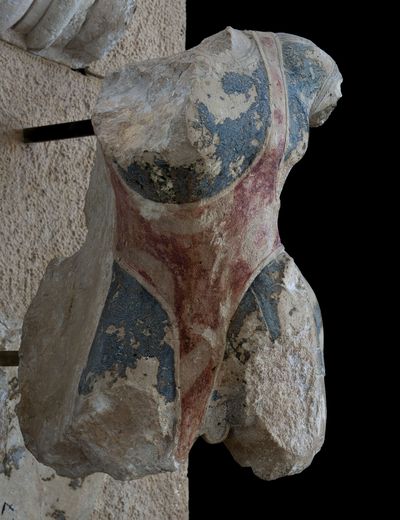The "Apotheosis (Deification) of Herakles Pediment"
Inventory number
Ακρ. 9
Category
Architectural sculpture
Period
Archaic Period
Date
Around 570 BC
Dimensions
Height: 0.94 m
Length: 1.74 m
Material
Poros limestone
Location
Archaic Acropolis Gallery









